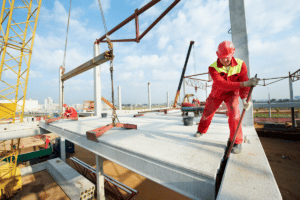Every day, a multitude of cargo vessels are loaded or unloaded in ports equipped with cranes and other heavy lifting equipment. Yet, because of the dangers associated with cargos and cranes, numerous marine workers run the risk of severe injuries, even death. In fact, the Occupational Safety and Health Administration (OSHA) states that 1 in 1,000 maritime crane operators will suffer fatal injuries. Many of these accidents could have been prevented with the proper safety training and equipment maintenance. If a maritime worker was injured due to negligence, federal and general maritime law provide compensation for medical expenses and lost wages.

Causes of Cargo and Crane Accidents
Ports and sea terminals are among the world’s most dangerous workplaces. Workers, heavy equipment, ships, and bulky cargo containers are constantly interacting as freighters are loaded and unloaded. Many different types of cranes are used in this type of work. Some are land-based and operate on the docks and in terminal areas. Other cranes are mounted on container ships and freighters.
Although cranes are useful and essential in the cargo handling process, they are inherently dangerous due to the nature of their intended task. Cranes have to hoist large and heavy objects and place them in a specific place. Longshore work, entails loading or unloading cargo ships of various types, including container ships. Typically, cranes handle objects that weigh hundreds and even thousands of pounds apiece.
Not only does this type of work require skilled workers to operate the cranes safely, but the machines must be kept in good working condition. When neither of these two conditions is met, accidents occur and workers suffer serious injury or death. Thus, most crane accidents involving maritime cargo are caused by either mechanical failure or operator error.

Mechanical Errors
Cranes are prone to have mechanical problems because they are used day in and day out to lift and lower heavy, bulky objects. Over time, the immense stresses of bearing huge loads and moving them up, down, and laterally wear down the crane’s components. Metal fatigue, worn-out slewing bearings, corrosion, and stress fractures reduce the crane’s structural integrity until it collapses or drops its load unexpectedly. However, it’s the responsibility of employers to regular schedule maintenance checks and repair any old and/or defective parts.
Operator Errors
The other main cause of accidents involving cranes and cargo is operator error. Operator error can encompass many areas of crane operations. The most common examples of operator error include:
- Not setting a crane’s outriggers properly before carrying out a slewing maneuver
- Failure to make sure the crane is not overloaded and that the cargo is properly balanced
- Failure to use a spotter and/or tag lines
- Failure to use a portable radio to ensure communication with other workers while loading/unloading cargo
- Failure to drive the crane at a safe speed
- Failure to keep the crane maintained or to check for defects after long periods of use
According to statistics cited in a National Institute for Occupational Safety and Health report, one crane tips over during every 10,000 hours of crane use in the United States. Nearly 80% of these tip overs are caused by operator error. The same report states that nearly 54% of these incidents were the result of failure to extend outriggers before swinging a boom or making a lift maneuver. Workers injured due to operator error may be entitled to damages if employers failed to provide adequate, proper training.
Maritime Cargo Accidents
Cargo accidents involving maritime workers can occur at any stage of a cargo run. They can happen while a vessel is being loaded or unloaded. They can also take place at sea, where even a small error or unlucky event can trigger off a disaster.
Cargo accidents can be caused by unpredictable acts of nature, such as a rogue wave hitting a container ship unexpectedly. However, in many cases, accidents that result in injuries or deaths can be caused by:
- Failure to properly secure cargo on decks and inside cargo holds
- Deficiencies in training and job performance in ship’s crew and longshore employees
- Failure to ensure that the cargo doesn’t exceed the ship’s holding capacity
- Failure to take steps to prevent cargo shifts
- Making unscheduled changes in the itinerary that result in unplanned alterations to ship’s cargo
- Failure to make sure that cargo is stored in strong, durable containers, bags, or other storage materials
- Carrying hazardous materials in an unsafe manner
Cargo accidents not only result in injuries or fatalities among ships’ crews and shore maritime workers. Many cargo vessels of all types are damaged or even lost at sea due to poor planning, loading and placement of cargo. In many cases, companies and/or ship owners decide to cut corners in safe cargo handling procedures to save time and money.
If seamen or longshore workers are injured in a maritime cargo or crane accident caused by negligence, federal and general maritime laws make them eligible for damages, including compensation for:
- Lost wages
- Cost of medical treatment and rehabilitation
- Disability
- Emotional trauma and pain
- Punitive damages (if applicable)
While seamen are covered by the Jones Act, port workers and longshore employees are covered by the Longshore and Harbor Workers’ Compensation Act (LHWCA). For additional resources on LHWCA, refer to our article Longshore and Harbor Workers’ Compensation Act.